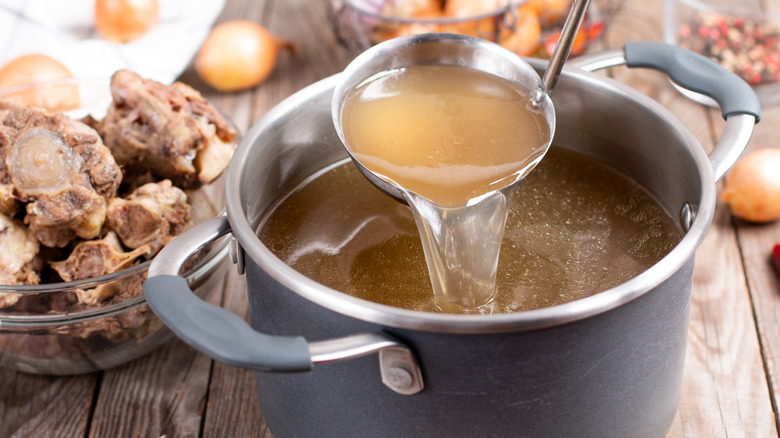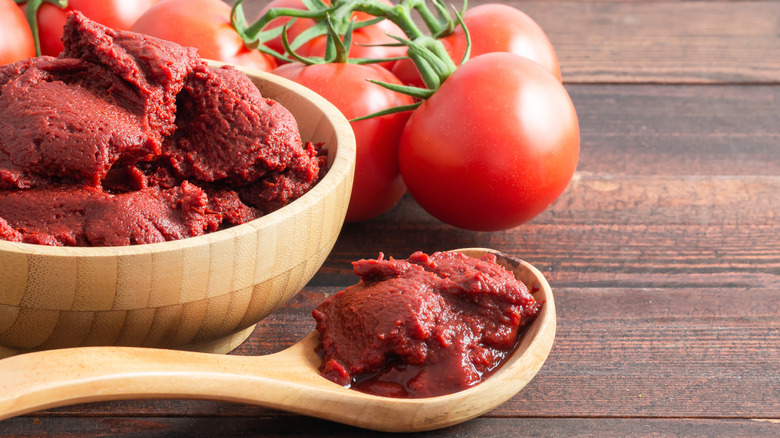Give Beef Broth A Richer Flavor With One Canned Ingredient
Canned tomato paste is a super versatile pantry staple that can upgrade fried eggs and make burger patties more flavorful. It's a key ingredient in recipes like classic pepper steak, and did you know it's also an add-in that can completely transform beef broth?
Maricel Gentile, chef and owner of Maricel's Kitchen and author of "Maricel's Simply Asian Cookbook," shared with Food Republic the inside scoop on tomato paste's powers of amplification, specifically honing in on its effects when added to beef broth. "Tomato paste is one of those ingredients that works like magic if you treat it right," she explained.
When incorporated during the process of making beef broth, "It brings warmth, earthiness, and a gentle acidity that helps balance the fat in beef," Gentile detailed. Whether the broth is going to be used as a component in a recipe or served as a standalone dish, the addition of the tomato paste is a game-changer. In Filipino beef stew recipes like mechado and kaldereta, for instance, which are staples in Filipino cooking, tomato paste is an essential component for achieving "slow-simmered, melt-in-your-mouth depth."
Gentile told us, "It reminds me of my Lola's kitchen in Manila, where her Kaldereta was always richer the second day. That is because the tomato paste had time to bloom and marry with the meat." This is perfect for stock, which is usually used in other dishes well after being made.
Incorporating tomato paste for greater depth of flavor
The point at which you incorporate tomato paste into your stock is a key factor in determining its deliciousness. Simply dumping a can into a pot of broth won't achieve the results you want, and you're very likely to get a tinny taste from the tomato instead of the flavor boost you're looking for. "Adding it at the end will only make it taste sharp or metallic, like uncooked tomato," Maricel Gentile said. "So for beef broth or stews, early is best. It is a small step that makes a big difference."
Sauteing the paste in a fat is a necessary task for eliminating that telltale aftertaste, which indicates it came from a can. A good time to incorporate the tomato element is when you're almost finished sauteing your aromatics, such as garlic and onion. "When you add [tomato paste] early in cooking and give it time to toast or caramelize, even for just a few minutes, it transforms," Gentile explained. "The natural sugars in the tomato concentrate start to deepen and develop umami richness. Tomato paste behaves more like a spice than a sauce when used this way."
You'll know it has properly caramelized when the paste has changed from its vivid, tomatoey red to a more brownish hue. "Let it sit in the hot pan for a few minutes until it darkens slightly and smells sweet and savory," Gentile advised. "That step, called 'toasting' the paste, builds complexity and really wakes up the flavor."


